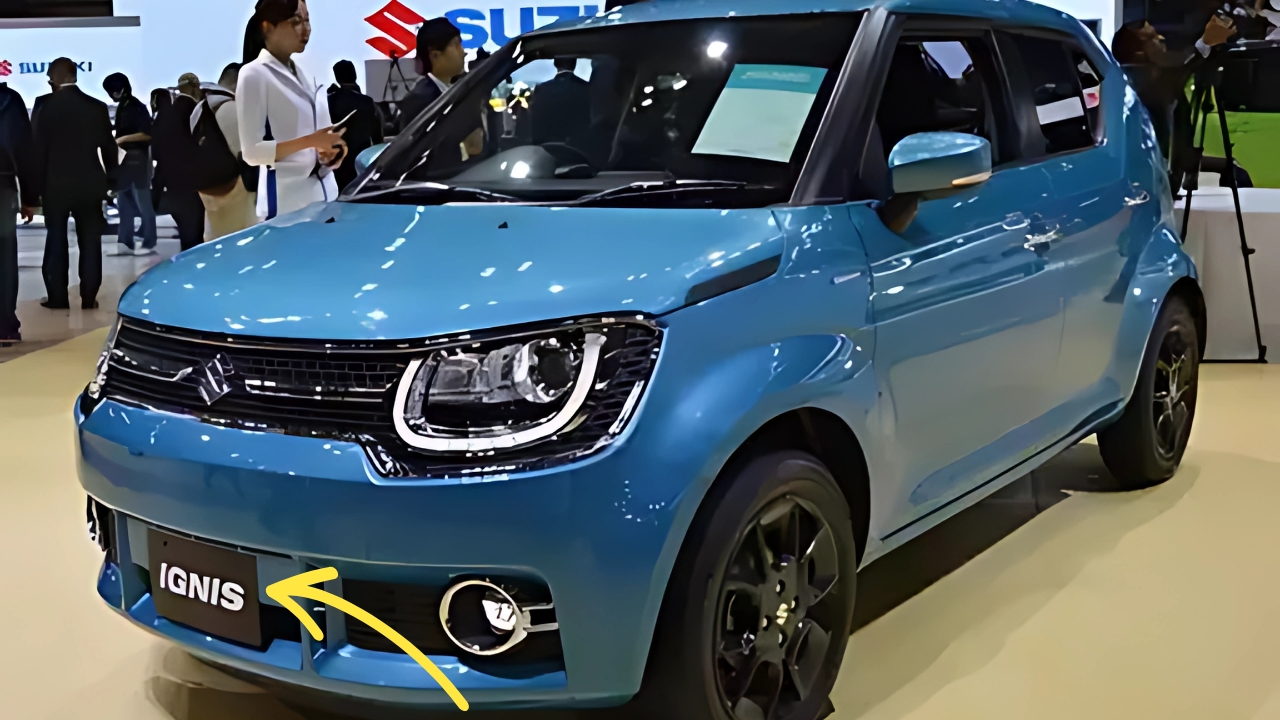Maruti Ignis: In the highly competitive Indian small car market, standing out requires more than competitive pricing or fuel efficiency claims.
When Maruti Suzuki introduced the Ignis in 2017, it represented the company’s attempt to create something genuinely different in the compact hatchback space—a vehicle with distinctive styling, reasonable practicality, and a character that appealed to younger buyers seeking individuality.
Now several years into its lifecycle and having received mid-life updates, the Ignis continues to occupy a unique position in Maruti’s extensive small car portfolio.
Maruti Ignis: Design Philosophy: Embracing Unconventionality
The most immediately striking aspect of the Ignis is its design, which deliberately avoids the flowing, aerodynamic shapes that dominate contemporary hatchbacks in favor of a more angular, upright stance.
Standing 3,700mm long, 1,690mm wide, and 1,595mm tall, the Ignis combines compact dimensions with a relatively tall profile that maximizes interior space while creating a distinctive silhouette.
The front fascia features a unique grille design with U-shaped chrome accents that connect to LED projector headlamps with distinctive daytime running light signatures.
The clamshell bonnet and flared wheel arches add visual muscle to what could otherwise be a boxy shape.
In profile, the blacked-out A and B pillars create a floating roof effect, while the C-pillar incorporates three slats that pay homage to the classic Suzuki Fronte from the 1970s—a thoughtful design element that connects the modern Ignis to the brand’s heritage.
The rear continues the angular theme with square-shaped tail lamps and a simple tailgate design.
Higher trim levels receive roof rails and flared wheel arch cladding that enhance the vehicle’s pseudo-crossover appearance without compromising its essential compact hatchback nature.
The 15-inch alloy wheels feature a distinctive design that complements the overall aesthetic while providing practical benefits in terms of ride quality.
Available in several vibrant color options including Turquoise Blue, Lucent Orange, and Nexa Blue, with optional dual-tone roof treatments, the Ignis offers extensive personalization possibilities that appeal to younger buyers seeking to express individuality through their vehicle choice.
Interior: Maximizing Space Through Thoughtful Design
Inside, the Ignis employs a minimalist design approach that prioritizes functionality without appearing austere.
The dashboard features a floating touchscreen infotainment system (7-inch in higher trims) positioned high for easy visibility, with toggle-like switches for the automatic climate control system adding a distinctive touch that sets the Ignis apart from other Maruti offerings.
The instrument cluster combines analog and digital elements in a straightforward layout that prioritizes legibility over visual flair.
The three-spoke steering wheel incorporates controls for audio and phone functions, providing convenient access without requiring drivers to remove their hands from the wheel.
Where the Ignis truly impresses is in its space utilization. The tall roof and upright seating position create an airy cabin that accommodates four adults in reasonable comfort despite the vehicle’s compact external dimensions.
Front seat occupants enjoy excellent headroom and visibility, while the rear bench provides adequate legroom for average-sized adults on shorter journeys.
The 60:40 split-folding rear seats enhance versatility, allowing the 260-liter boot capacity to expand to 514 liters when additional cargo space is required.
Material quality reflects the Ignis’s positioning, with durable plastics dominating the cabin. While not plush, the surfaces are well-assembled with consistent panel gaps and thoughtful touches like body-colored accents on higher trims that add visual interest to an otherwise straightforward interior design.
Powertrain and Driving Dynamics
Under the hood, the Ignis employs Maruti’s familiar K12M 1.2-liter four-cylinder petrol engine, producing 83 horsepower and 113 Nm of torque.
This powerplant is offered with either a 5-speed manual transmission or an automated manual transmission (AMT) branded as Auto Gear Shift (AGS) by Maruti Suzuki.
The engine received updates to meet BS6 emission norms, including the addition of idle start-stop technology on higher trims to improve fuel efficiency in urban traffic conditions.
The driving experience prioritizes ease of use over engagement, with light controls making the Ignis particularly suited to urban environments.
The high seating position provides excellent visibility, while the tight turning radius of 4.7 meters facilitates maneuvering in confined spaces. The steering, while lacking in feedback, offers sufficient precision for daily driving scenarios.
Performance is adequate rather than inspiring, with the manual variant capable of reaching 100 km/h in approximately 12 seconds.
More relevant to the intended usage pattern is the fuel efficiency, with Maruti claiming figures between 20-21 km/l depending on transmission choice—numbers that translate to genuinely economical running costs.
Ride quality represents a reasonable compromise given the vehicle’s short wheelbase and tall body structure. The suspension effectively absorbs minor road imperfections while maintaining composure over larger bumps, though sharp impacts can occasionally filter through to the cabin.
Body roll is present during enthusiastic cornering, a natural consequence of the tall profile that prioritizes interior space over sporty handling characteristics.
Safety and Technology
Safety features in the Ignis include dual front airbags, ABS with EBD, rear parking sensors, and ISOFIX child seat anchors as standard across all variants.
The body structure incorporates Suzuki’s HEARTECT platform, designed to better absorb and distribute crash energy—contributing to the Ignis receiving a respectable three-star rating in Global NCAP crash tests.
On the technology front, higher trims feature the aforementioned 7-inch SmartPlay touchscreen infotainment system, offering smartphone connectivity through Apple CarPlay and Android Auto.
The system provides access to navigation, music streaming, and hands-free calling functions, complemented by steering-mounted controls for safer operation while driving.
Additional technological amenities include automatic climate control, keyless entry with push-button start, electrically adjustable and folding mirrors, and rear defogger with wiper—features that enhance convenience without significantly impacting the vehicle’s value proposition.
Market Positioning and Appeal
The Ignis occupies a unique position in Maruti’s extensive small car portfolio, sitting alongside more conventional offerings like the Swift and Baleno while appealing to a different type of buyer.
Positioned under Maruti’s premium Nexa retail channel rather than traditional dealerships, the Ignis targets urban consumers seeking individuality and distinctive styling in an affordable package.
This positioning has allowed the Ignis to carve out its own niche rather than directly competing with mainstream hatchbacks, appealing particularly to younger buyers purchasing their first car or small families seeking maximum interior space within minimal external dimensions.
The availability of an automatic transmission option further enhances its appeal for urban commuting, where traffic congestion makes manual gear changes less desirable.
Maruti Ignis:
The Maruti Suzuki Ignis represents a bold departure from conventional small car design philosophy, prioritizing character and space efficiency over the generic styling that often dominates this segment.
By combining distinctive aesthetics with practical interior packaging and Maruti’s proven reliability, the Ignis offers a compelling alternative for consumers seeking something different without sacrificing the fundamental attributes that make small cars popular in the Indian market.
While not without compromises—particularly in areas like material quality and driving dynamics—the Ignis successfully delivers on its core promise of providing a unique ownership experience at an accessible price point.
In a market increasingly dominated by SUV-inspired designs, the Ignis demonstrates that thoughtful, distinctive approaches to traditional vehicle segments can still find appreciation among consumers willing to embrace unconventional choices.
As urban mobility continues to evolve, the Ignis’s approach to maximizing interior space while minimizing external footprint represents a relevant interpretation of what personal transportation can offer in congested metropolitan environments—proving that standing out from the crowd can be achieved through thoughtful design rather than following prevailing trends.

